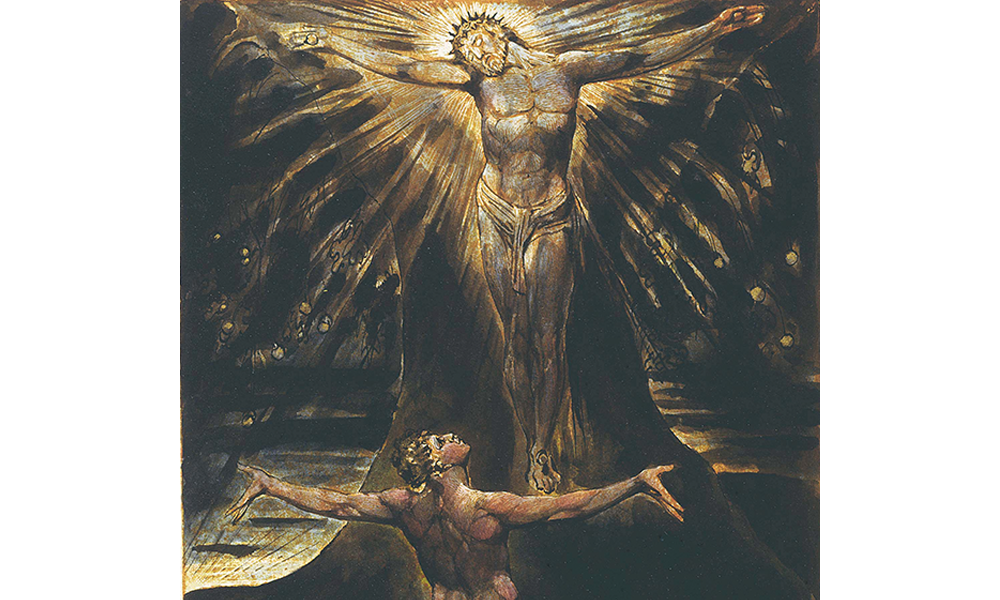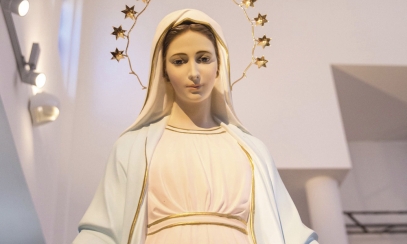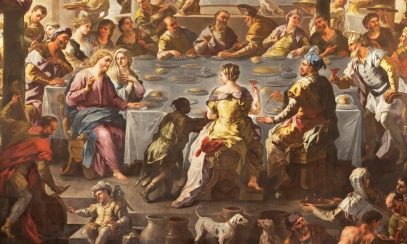
Are you a G, a T or a B?
“Since we are created in God’s image and likeness, each of us is wired for the true, the good and the beautiful. But we need to realize that most of us are wired for one of these more than the other two.” This insight from a Catholic evangelist has made a profound impact on me – not only in my teaching and ministry, but even in the way I parent and relate to others.
“Since we are created in God’s image and likeness, each of us is wired for the true, the good and the beautiful. But we need to realize that most of us are wired for one of these more than the other two.” This insight from a Catholic evangelist has made a profound impact on me – not only in my teaching and ministry, but even in the way I parent and relate to others.
In 2015, a young Canadian named Michael Dopp gave a workshop on evangelization for the Diocese of Saginaw. Michael emphasized that in order to share the Good News or simply interact with people, we need to be sensitive to who they are and how they are wired. This includes knowing whether the person is a G (wired predominantly for the good), a T (wired for the truth) or a B (wired for the beautiful). He gave an example from his own life.
During the years when reports of clerical abuse scandals were dominating the headlines, Michael had a conversation with his father-in-law. Michael is a T, and he mentioned that that even if a pope were arrested for abuse, it would not destroy his faith. Michael said he would be able to think his way through things – keeping the distinction between the divine elements and the human elements of the Church, which can disappoint or even scandalize us.
Michael’s father-in-law was aghast at the notion that Michael could simply go on practicing his faith in the face of a pope committing such a heinous crime. The more Michael tried to use truth arguments to explain his position, the more resistant his father-in-law became. Finally, Michael’s wife leaned over and whispered in his ear: “My dad’s a G.” Suddenly, Michael’s eyes were opened to the reality that because goodness was of paramount importance to his father-in-law, abusing another human being – especially if done by a cleric – was devastating to him. The truth arguments that Michael found so helpful were of little use to his goodness-centered father-in-law.
“In him we live and move and have our being.” (Acts 17:28)
Please bear with me for a brief detour into philosophy, where the true, the good and the beautiful are called “transcendentals.” They are universal attributes of being, and ultimately attributes of the Creator of all that exists, God himself. By the way, it is actually a bit insulting to call God “the Supreme Being.” God is not merely “at the top of the ladder” of all that exists. He is the very ground of all being! This is the meaning behind his mysterious name that he discloses to Moses: “I am who am.” Inasmuch as God is Infinite Being, he is also Infinite Truth, Infinite Goodness and Infinite Beauty. This is why we, as creatures made by God in his likeness and image, are uniquely destined to embrace the true, the good and the beautiful – in this life and the next.
Real-life Implications
The fact that most people are especially geared towards one particular transcendental has important implications. In family life, for instance, you might notice that your high school-aged child has little interest in reading the Catechism or discussing Catholic doctrine. But he or she comes to life when the school organizes a mission trip to serve underprivileged people in Appalachia. Your child, then, is likely a G – wired for the good.
For parishes that put on events, it is important to include content that is meaningful for the T’s, the G’s and the B’s. For example, if a parish has a gathering connected with the current Eucharistic Revival, it could show a YouTube video called “The Veil Removed.” This 7-minute film uses beauty to reveal an important truth – that at every Mass, Christ’s sacrifice on Calvary is made present to us in a real but mystical way. B’s and T’s will love the content, and then if you allow 10 minutes for people to share their reactions to the film in small groups, the G’s will also be thrilled. G’s love the experience of community!
The Way of Beauty
I am a B, so I am delighted that recent popes have called the Church to prioritize “the way of beauty” as the most fruitful way to invite people into a relationship with Christ. Why is this? In part, because much of the western world is now awash with moral relativism and subjectivism. If we try to evangelize by appealing to “the good,” many people will react by saying: “Don’t tell me what is good and what is not good. How dare you impose your morality on me!” Or if we lead with “the true,” the response will often be: “Hey, you have your truth, and I have mine. Leave me alone.” But beauty is different. Beauty simply washes over people, leaving them transformed. Think of when St. Peter beheld the divine light shining from Christ at the Transfiguration. He was overwhelmed by wonder and a desire to bask in the Lord’s beauty: “Master, it is good that we are here; let us make three tents, one for you, one for Moses, and one for Elijah” (Lk 9:33).
I once read the testimony of someone who converted to the Catholicism simply by picking up a coffee table book containing great Catholic art. It reminds me of a line in one of Dostoevsky’s novels, The Idiot: “I believe the world will be saved by beauty.”
Reflecting on my own spiritual journey, several encounters with beauty played a key role in my conversion at age 26. I was only attending Mass occasionally, and my sense of happiness was in decline. But as I plugged away at my doctoral thesis on the English poet, painter and engraver, William Blake – the beauty of one of his images pierced me. Blake had drawn a figure of a man standing before the cross of Christ in open-armed surrender. This pose planted a seed in my heart that came to fruition on St. Patrick’s Day in 1989. I was at an Irish concert and noticed a priest walk into the hall dressed in clerical attire. I perceived a beautiful light around him that prompted me to say a prayer as I fell asleep that night: “Lord, you take over.” God heard this prayer of surrender in a big way.
The next morning, out of the blue, my old Notre Dame classmate called me from Syracuse and asked, “Can my wife and I drive to Buffalo to pay you a visit?” When they arrived, I was struck by the beauty in their eyes. Their gaze shone with a peace and joy that I knew I lacked.
Dave and Elissa explained that they had just returned from Medjugorje in the former Yugoslavia (now Bosnia-Herzegovina) where, starting in 1981, a group of young people have claimed to receive visits and messages from Mary, the Queen of Peace. (Although the Church still has not given a definitive judgment about whether these claimed Marian apparitions are worthy of belief, in 2019 Pope Francis authorized dioceses and parishes to organize pilgrimages as an acknowledgment of the "abundant fruits of grace" that have come from Medjugorje.)
My friends showed me a book on Medjugorje that contained some photographs. When I looked at a photo of the youth at the moment when they claimed to see and hear the Virgin Mary, something about their beautiful faces convicted me that I needed to fully practice the Faith I was raised in. When my friends invited me to go to Mass with them the next day, I said “yes.” It happened to be Palm Sunday and during the reading of Christ’s Passion, a torrent of grace washed over me. I turned to my friends and whispered, “I think I’m called to serve Christ and his Church.”
I have never been the same since…thanks to the merciful Lord whom St. Augustine calls, “Beauty ever ancient, ever new!”
Dr. Dan Osborn is the Diocesan Theologian and Coordinator of Permanent Diaconate Formation & Ministry for the Diocese of Saginaw.



